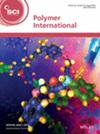Km Supriya Das, Neha Singh, Kuladip Barman, Shivani Kasana, Balak Das Kurmi, Ghanshyam Das Gupta, Preeti Patel
求助PDF
{"title":"基于分子印迹聚合物的各种疾病生物标志物检测进展综述","authors":"Km Supriya Das, Neha Singh, Kuladip Barman, Shivani Kasana, Balak Das Kurmi, Ghanshyam Das Gupta, Preeti Patel","doi":"10.1002/pi.70004","DOIUrl":null,"url":null,"abstract":"<p>Molecularly imprinted polymers (MIPs) have garnered considerable attention across various fields due to their exceptional specificity and affinity for biomarker detection. These polymers exhibit significant potential in pharmaceuticals, disease diagnosis, electrochemical sensing, extraction of bioactive compounds, pathogen identification and environmental chemistry. The interdisciplinary fusion of chemistry, medicine, analytical techniques and sensing technologies has greatly benefited from the stability and effectiveness of MIPs. The synthesis of MIPs involves various methodologies, including integration of membrane separation technology with molecular imprinting technology. Their structure and composition are characterized using a variety of physical, chemical and thermal techniques. This review explores various aspects of MIP-based biomarker recognition, providing classifications of biomarkers and a balanced discussion on both the advantages and limitations of current approaches. Moreover, the review highlights extensive applications of MIPs, as detection of cancer and neurodegenerative disease markers as well as identification of volatile biomarkers. MIPs have shown promising capabilities in early-stage screening of protein biomarkers and electrochemical detection of pathogens and other biological markers, including non-invasive samples such as saliva. Although applications of MIPs in catalysis and drug delivery are still in their infancy, there are numerous opportunities for further research and development that could lead to significant advancements in coming years. © 2025 Society of Chemical Industry.</p>","PeriodicalId":20404,"journal":{"name":"Polymer International","volume":"74 9","pages":"783-799"},"PeriodicalIF":3.6000,"publicationDate":"2025-07-08","publicationTypes":"Journal Article","fieldsOfStudy":null,"isOpenAccess":false,"openAccessPdf":"","citationCount":"0","resultStr":"{\"title\":\"Advancements in molecularly-imprinted-polymer-based biomarker detection for various diseases: a comprehensive overview\",\"authors\":\"Km Supriya Das, Neha Singh, Kuladip Barman, Shivani Kasana, Balak Das Kurmi, Ghanshyam Das Gupta, Preeti Patel\",\"doi\":\"10.1002/pi.70004\",\"DOIUrl\":null,\"url\":null,\"abstract\":\"<p>Molecularly imprinted polymers (MIPs) have garnered considerable attention across various fields due to their exceptional specificity and affinity for biomarker detection. These polymers exhibit significant potential in pharmaceuticals, disease diagnosis, electrochemical sensing, extraction of bioactive compounds, pathogen identification and environmental chemistry. The interdisciplinary fusion of chemistry, medicine, analytical techniques and sensing technologies has greatly benefited from the stability and effectiveness of MIPs. The synthesis of MIPs involves various methodologies, including integration of membrane separation technology with molecular imprinting technology. Their structure and composition are characterized using a variety of physical, chemical and thermal techniques. This review explores various aspects of MIP-based biomarker recognition, providing classifications of biomarkers and a balanced discussion on both the advantages and limitations of current approaches. Moreover, the review highlights extensive applications of MIPs, as detection of cancer and neurodegenerative disease markers as well as identification of volatile biomarkers. MIPs have shown promising capabilities in early-stage screening of protein biomarkers and electrochemical detection of pathogens and other biological markers, including non-invasive samples such as saliva. Although applications of MIPs in catalysis and drug delivery are still in their infancy, there are numerous opportunities for further research and development that could lead to significant advancements in coming years. © 2025 Society of Chemical Industry.</p>\",\"PeriodicalId\":20404,\"journal\":{\"name\":\"Polymer International\",\"volume\":\"74 9\",\"pages\":\"783-799\"},\"PeriodicalIF\":3.6000,\"publicationDate\":\"2025-07-08\",\"publicationTypes\":\"Journal Article\",\"fieldsOfStudy\":null,\"isOpenAccess\":false,\"openAccessPdf\":\"\",\"citationCount\":\"0\",\"resultStr\":null,\"platform\":\"Semanticscholar\",\"paperid\":null,\"PeriodicalName\":\"Polymer International\",\"FirstCategoryId\":\"92\",\"ListUrlMain\":\"https://scijournals.onlinelibrary.wiley.com/doi/10.1002/pi.70004\",\"RegionNum\":4,\"RegionCategory\":\"化学\",\"ArticlePicture\":[],\"TitleCN\":null,\"AbstractTextCN\":null,\"PMCID\":null,\"EPubDate\":\"\",\"PubModel\":\"\",\"JCR\":\"Q2\",\"JCRName\":\"POLYMER SCIENCE\",\"Score\":null,\"Total\":0}","platform":"Semanticscholar","paperid":null,"PeriodicalName":"Polymer International","FirstCategoryId":"92","ListUrlMain":"https://scijournals.onlinelibrary.wiley.com/doi/10.1002/pi.70004","RegionNum":4,"RegionCategory":"化学","ArticlePicture":[],"TitleCN":null,"AbstractTextCN":null,"PMCID":null,"EPubDate":"","PubModel":"","JCR":"Q2","JCRName":"POLYMER SCIENCE","Score":null,"Total":0}
引用次数: 0
引用
批量引用




 求助内容:
求助内容: 应助结果提醒方式:
应助结果提醒方式:


